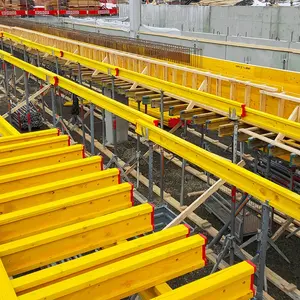Introduction to Traditional Timber Formwork
Traditional timber formwork is a time-tested construction method that utilizes wooden planks and frames to shape concrete structures. This technique has been employed for decades due to its versatility and accessibility, providing the ideal framework for a variety of concrete applications. Known for its robust nature, traditional timber formwork is favored by builders for both residential and commercial projects, offering a reliable solution for achieving complex designs and precise dimensions.
Types of Traditional Timber Formwork
There are several types of traditional timber formwork, each catering to different construction needs:
- Panel Formwork: Made of large, flat wooden panels, this type is often used for walls and columns, allowing for quick assembly and disassembly.
- Single-Sided Formwork: Ideal for structures where only one side needs support, this formwork is lightweight and easy to handle.
- Beam Formwork: Specifically designed for constructing beams, this type utilizes timber beams and joists to provide the necessary support and shape.
- Custom Formwork: Tailored to unique architectural features, custom timber formwork allows for intricate designs, accommodating curved and sloped surfaces.
Applications of Traditional Timber Formwork
The applications of traditional timber formwork are vast, making it suitable for various construction scenarios:
- Residential Buildings: Commonly used in houses for foundations, walls, and driveways, providing a strong base for homes.
- Commercial Structures: Employed in office buildings, retail spaces, and warehouses to create durable concrete frameworks.
- Infrastructure Projects: Utilized in roads, bridges, and tunnels, timber formwork ensures stability in large-scale constructions.
- Architectural Features: Supports complex designs like arches and ornamental details, enabling creative construction.
Features and Advantages of Traditional Timber Formwork
Traditional timber formwork boasts a range of features and advantages that enhance its effectiveness in construction:
- Cost-Effectiveness: Timber is generally more affordable compared to other materials, making it a budget-friendly option for construction projects.
- Ease of Use: Lightweight and manageable, traditional timber formwork can be assembled and dismantled quickly, reducing labor time and costs.
- High Versatility: Suitable for various types of concrete pours, it can be adapted to different designs, shapes, and sizes.
- Eco-Friendly: Timber is a renewable resource, and when sourced responsibly, it contributes to sustainable building practices.
- Excellent Finish: When properly treated, timber formwork provides a smooth finish on concrete surfaces, reducing the need for further finishing work.





















































